Ensuring that children with behavioral and mental health challenges are cared for within a community is an admirable ambition, but not one that is easily achieved. Often the desire to protect vulnerable children leads to hiding their care away from the community, when in fact ensuring that they are treated as part of it helps them and their families most. When VK architects+engineers was invited by Groep Zorg H. Familie, a Belgian nonprofit health care trust, to renovate an existing children’s mental health care facility in the provincial Belgian town of Kortrijk, the firm sought to take on these issues in a way that was sensitive to both the patients and nearby residents.
After discovering that the trust had earlier purchased a school building adjacent to the facility they were to refurbish, VK’s design team suggested an alternative strategy. “Following several design meetings with the client, we came to the conclusion that it would be better to invest in a completely new hospital that’s more integrated into the streets of the city,” says VK senior architect Frederique Lievens. The firm, which has considerable experience designing behavioral and mental health care facilities throughout Belgium, replaced the school building with a purpose-built children’s mental health care center that is closely tied into the surrounding neighborhood.
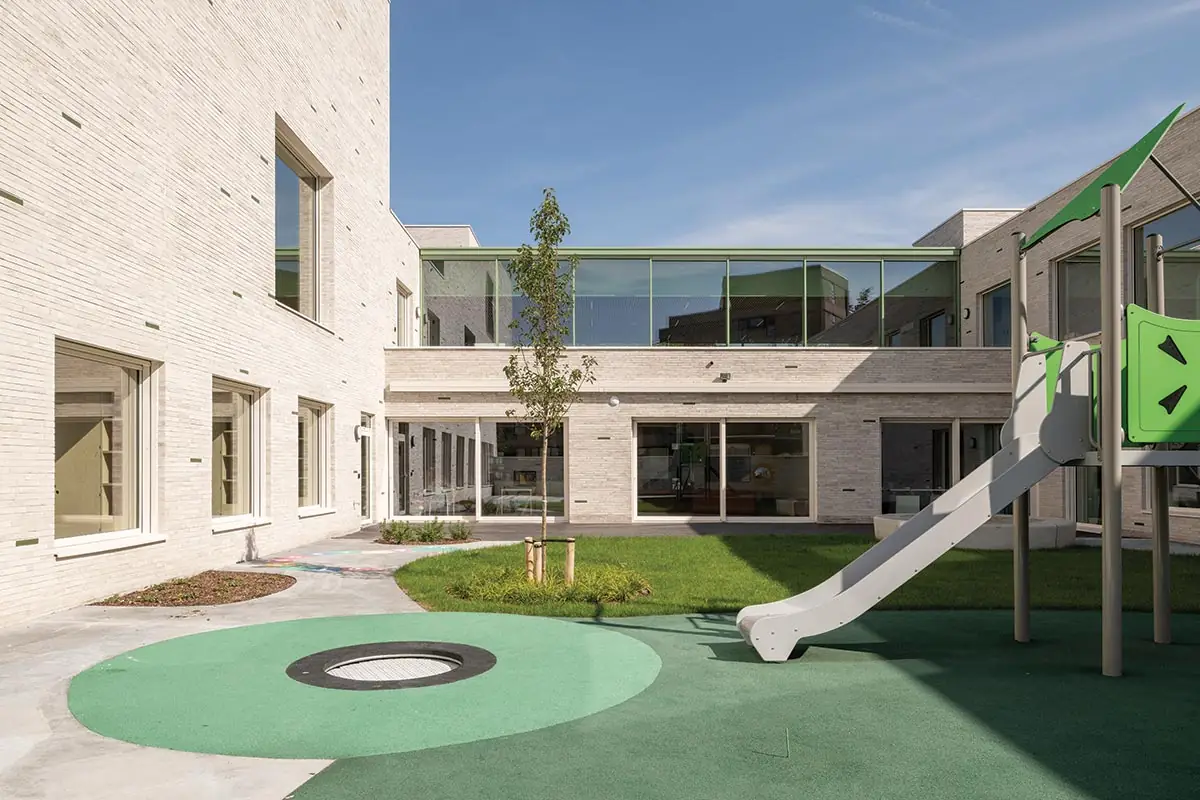
Patients have access to four private courtyards. Photo © Klaas Verdru, click to enlarge.
The center is clad in white-faced brick, and, with four enclosed courtyards, has the air of a monastery—albeit a modern one with a civic feel. “It is a structure designed for the user, but also for the benefit of the surroundings,” says Bert Scheirlynck, a senior architect at VK. Viewed from the west, De Korbeel, as the building is named, reads as three low volumes that front on the street, directly abutting an existing building to the south and matching the scale of nearby rowhouses. A new pedestrian and bicycling path that links the nearby town center to a verdant 19th-century residential neighborhood is sandwiched between the north side of the building and a matching white brick wall on the edge of the site. On the facility’s east side, two wings that read as separate two-story buildings protrude toward an existing adult psychiatric hospital.
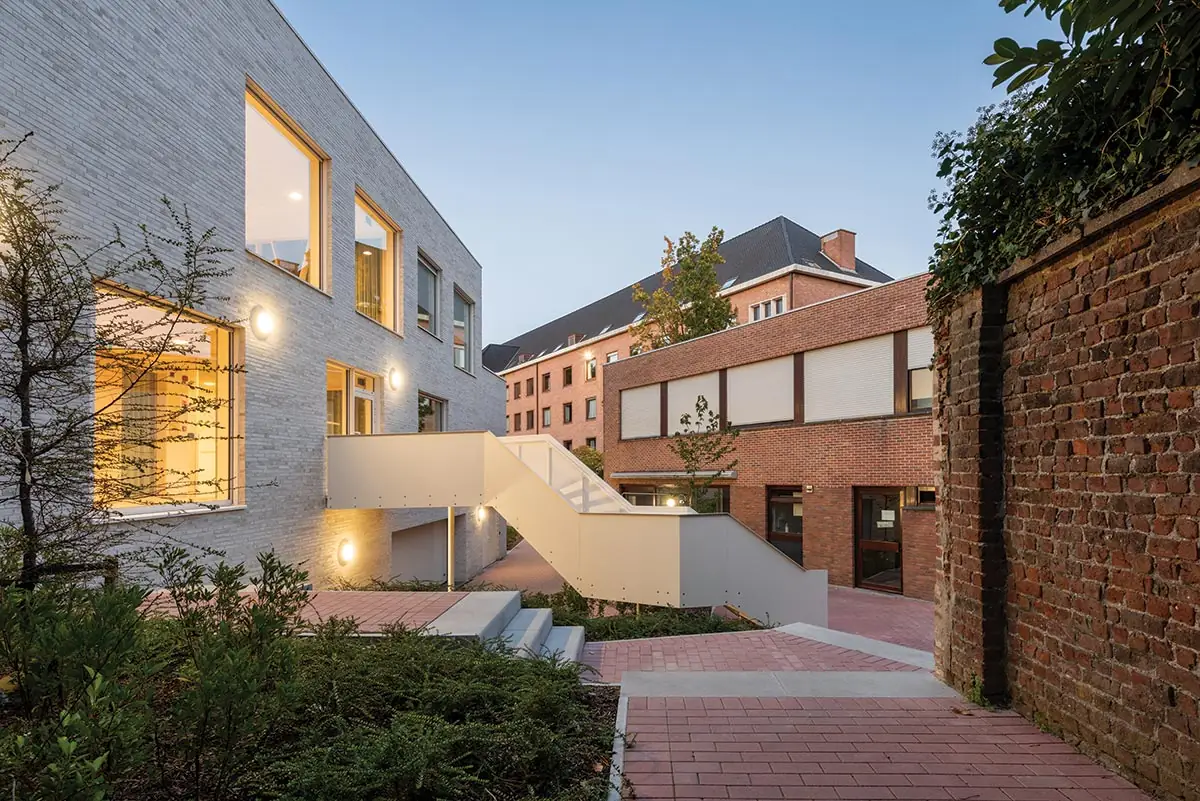
The building’s low-slung forms fit seamlessly into their surroundings. Photo © Klaas Verdru
De Korbeel is not a large facility; it contains 82,000 square feet across two floors. On the ground floor are 45 bedrooms, providing on-site residential care of varying lengths to 39 children and young adults from the ages of 5 to 18, as well as room for six outpatients. Since a combination of play and rest was seen as optimal by the client, sleeping and rest spaces were placed together on the ground floor to ensure that patients could be effectively supervised from interior and exterior spaces. During the day, therapy sessions take place on the second floor, in small rooms or in the dance studio, music room, or sports hall. At night, the entire second floor can be closed off.
As for the horizontal organization, the complex is effectively oriented around a central two-story spine out of which five wings emerge. In addition to circulation and building services, the spine also houses on the ground floor a large communal kitchen and living spaces for the children, as well as administrative stations for nurses. Upon entering the facility, one can see down the hall to the wings, each of which branches off at a right angle and accommodates a different program or age group. Closest to the entrance, to the east, is a separate access point for De Patio, which is run by the same organization and is contained in the same building. This distinct unit has room for residential care for eight boys between the ages of 12 and 18 with psychiatric challenges, who have been referred by juvenile courts.
The courtyards between the wings not only establish De Korbeel’s welcoming feel but provide a space for the young patients to de-stress using age-appropriate outdoor games and recreational equipment. The communal kitchen and living spaces open onto them through long glazed doors—as do a number of bedroom windows, though these are equipped with thick shutters in case seclusion is needed.
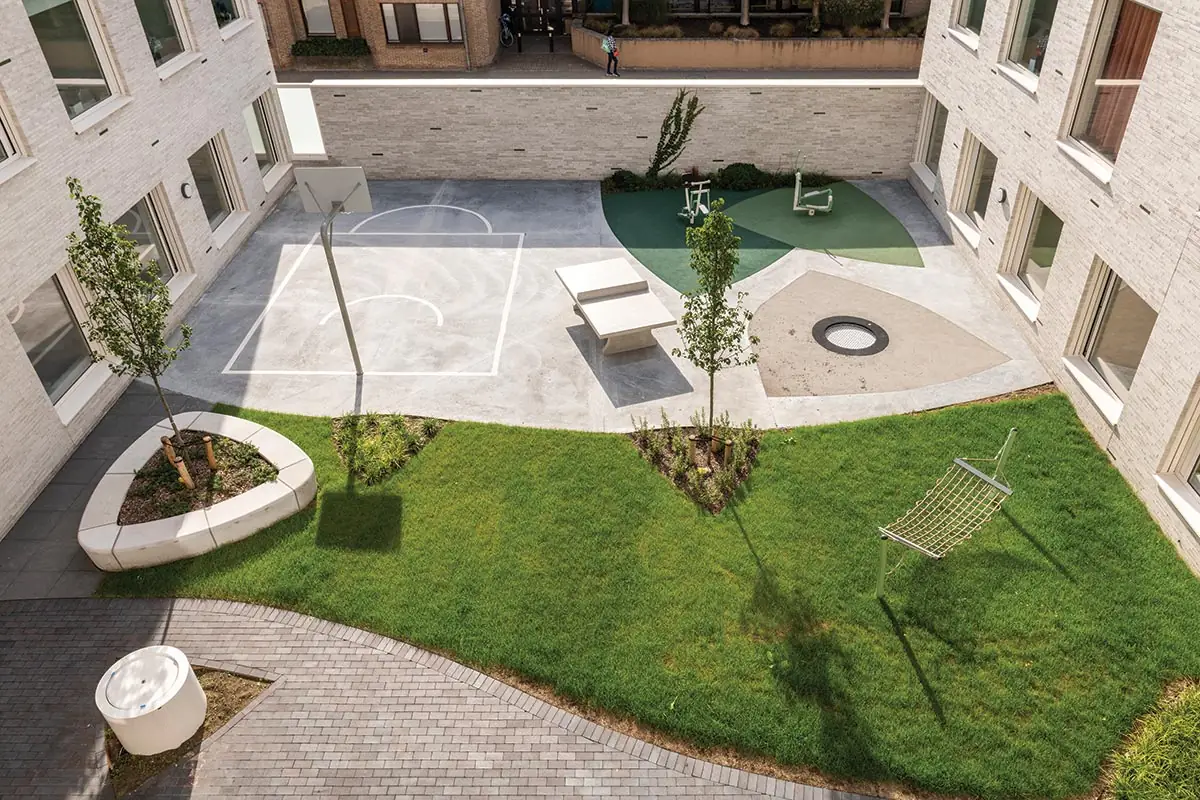
1
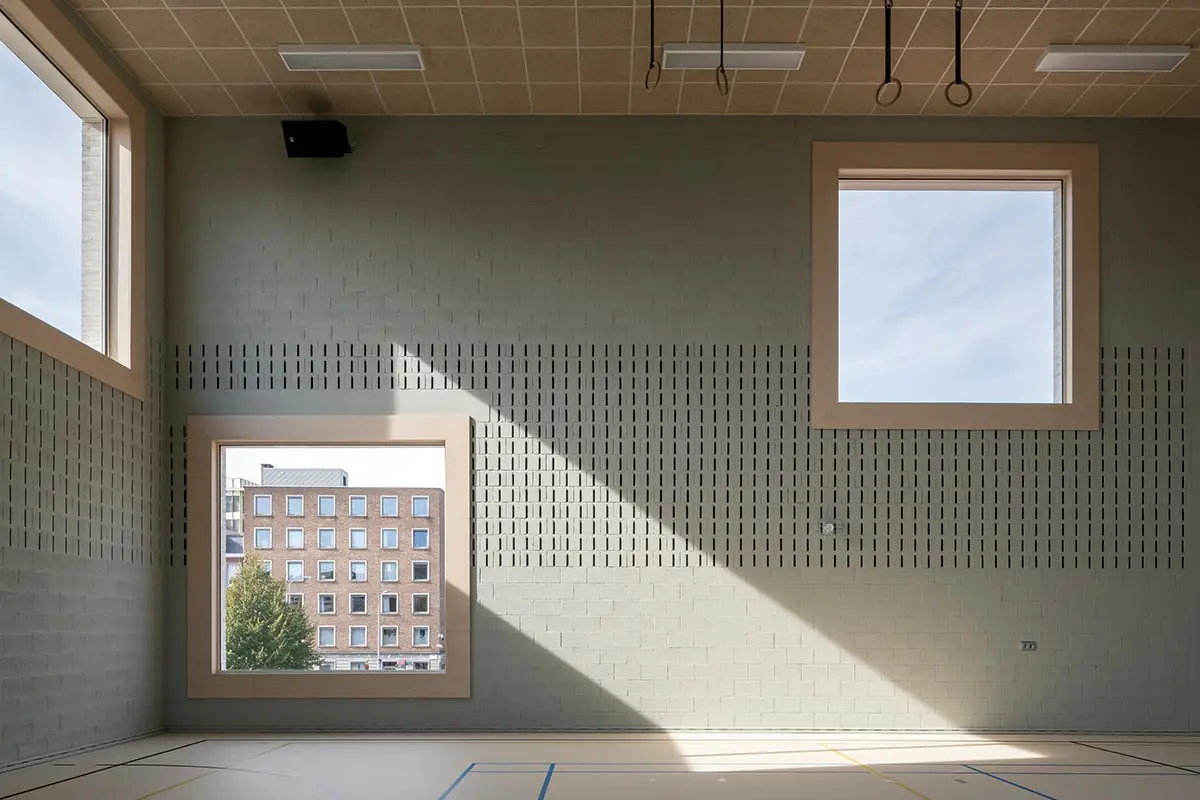
2
The courtyards (1) and an interior sports hall (2) offer residents recreational opportunities. Photos © Klaas Verdru
Wood predominates throughout the interior. Although the building is framed in concrete, partitions and frames are made from koto, a light-toned tropical hardwood, while the ceilings in the corridors are lined with 1-inch-thick wood-wool cement panels for acoustic insulation. The effect is solid but calming. Indeed, “calm” is one of the key words that users of the building employ to describe it.
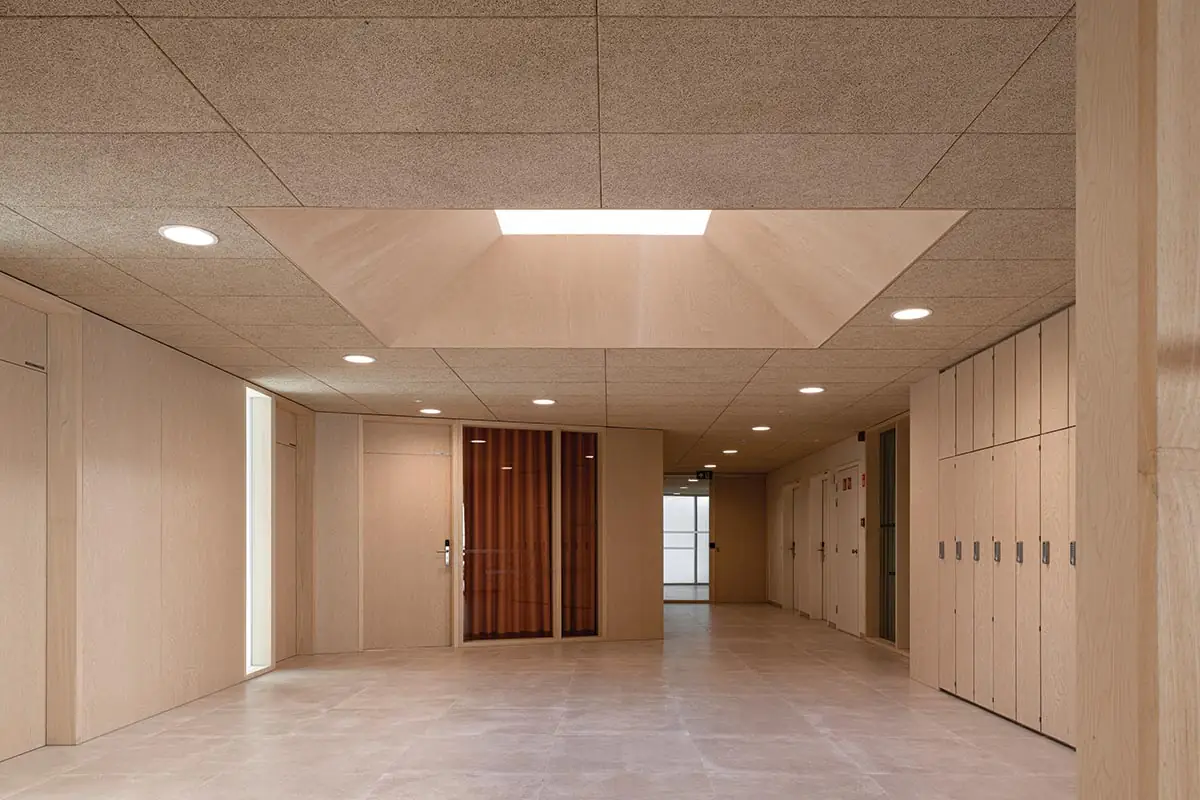
3
Interior spaces are filled with light and generously appointed in wood (3 - 5). Photos © Klaas Verdru
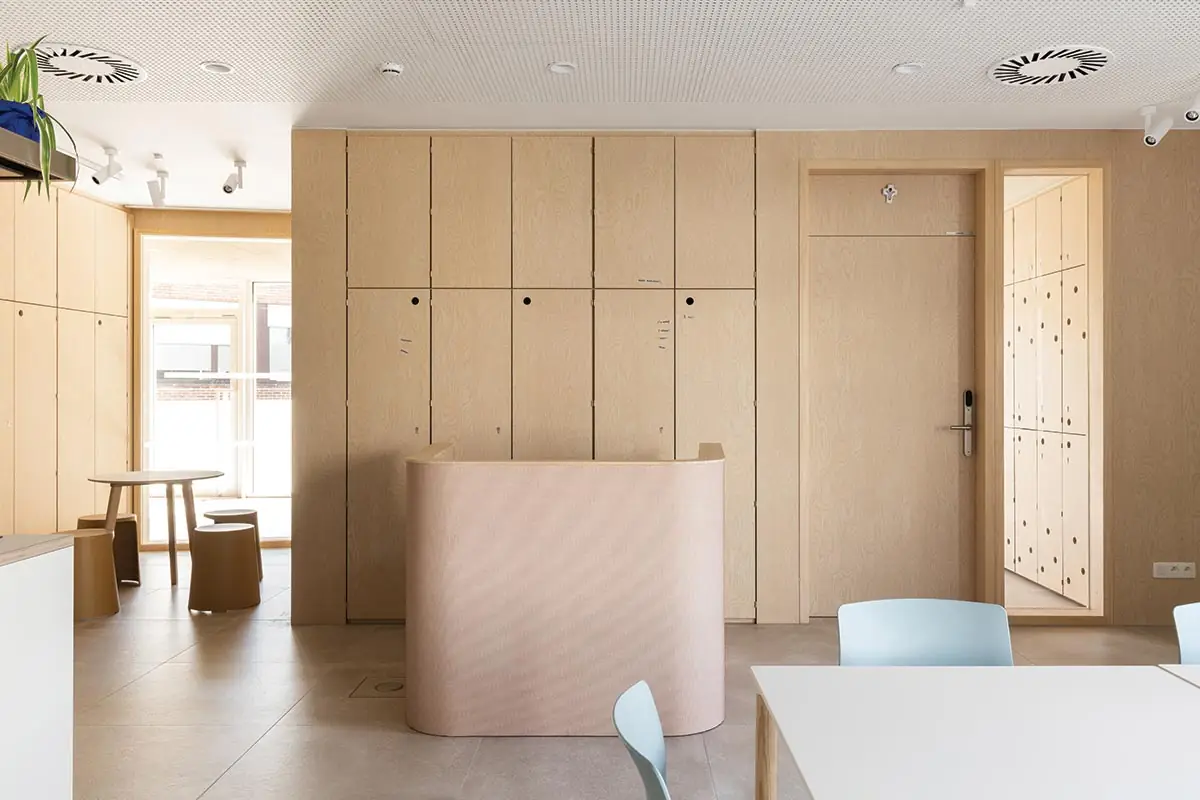
4
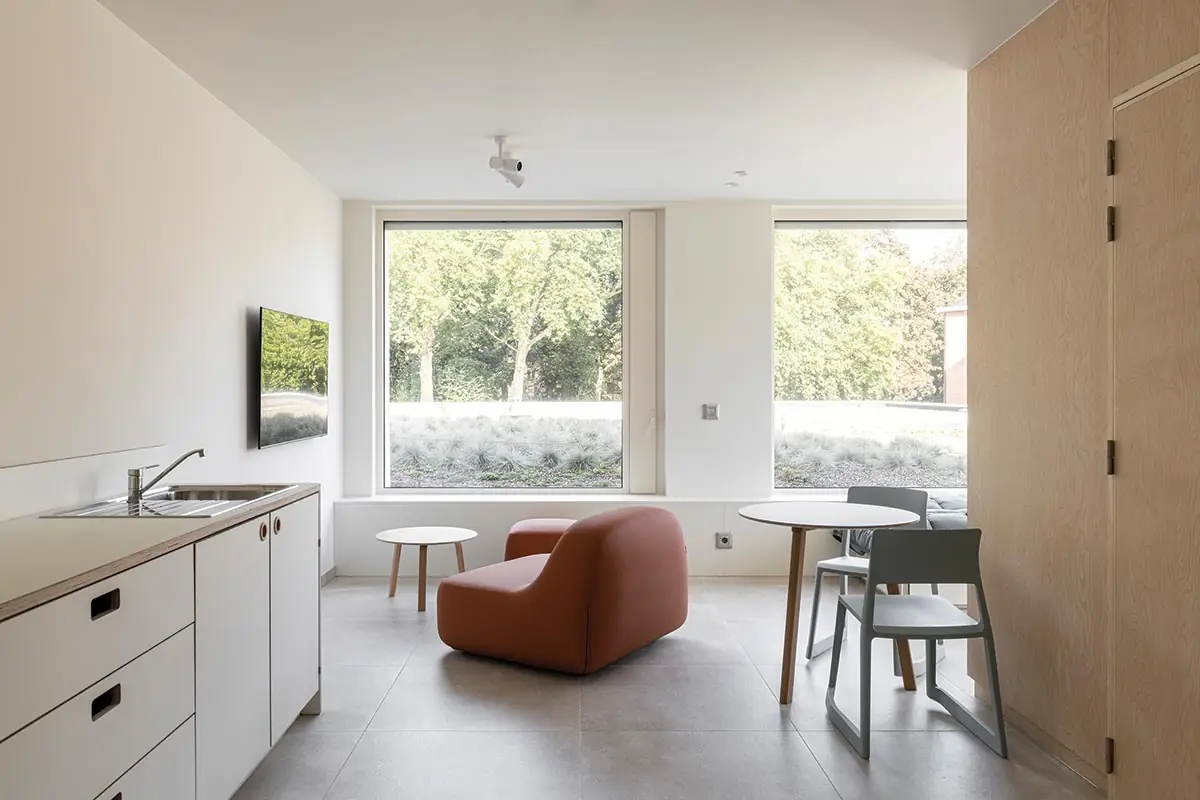
5
Ever-present safety concerns mean that there is an inevitable element of managed risk within this architecture. The young people who use De Korbeel can be violent. The rooms are fitted out with bespoke floor-to-ceiling carpentry in maple plywood that combines storage space with hidden wash basins that staff can lock for children who are unable to use them without causing harm. Beds are fixed to the floor to prevent them from being used to barricade doors. Doors have already been kicked off their hinges and had to be redesigned in response. The whole building is outfitted with a quiet alarm system, meaning that, when an incident occurs, staff members can alert each other using wrist activators that direct support to specific rooms. At night, in the secure unit, individual room doors in the wing can be opened so that residents can use the restrooms—but when one door is opened, the others are automatically locked to prevent residents from gathering in the corridor.
Given the level of risk, the generosity of the design is all the more commendable: even security doors are paneled in wood. De Korbeel means “corbel,” and, although there are no corbels in the building, the name constitutes an apt metaphor for the building’s role as social support. Two studio apartments, one of which is located in the secure facility, enable those who are on the cusp of adulthood to work on caring for themselves in a supervised environment before they move out, into social housing. This is one of the many ways in which the necessary risk involved in helping vulnerable young people care for themselves is mitigated, and it is a key example of how this remarkable building is both architecturally and programmatically part of the community.
Click plan to enlarge
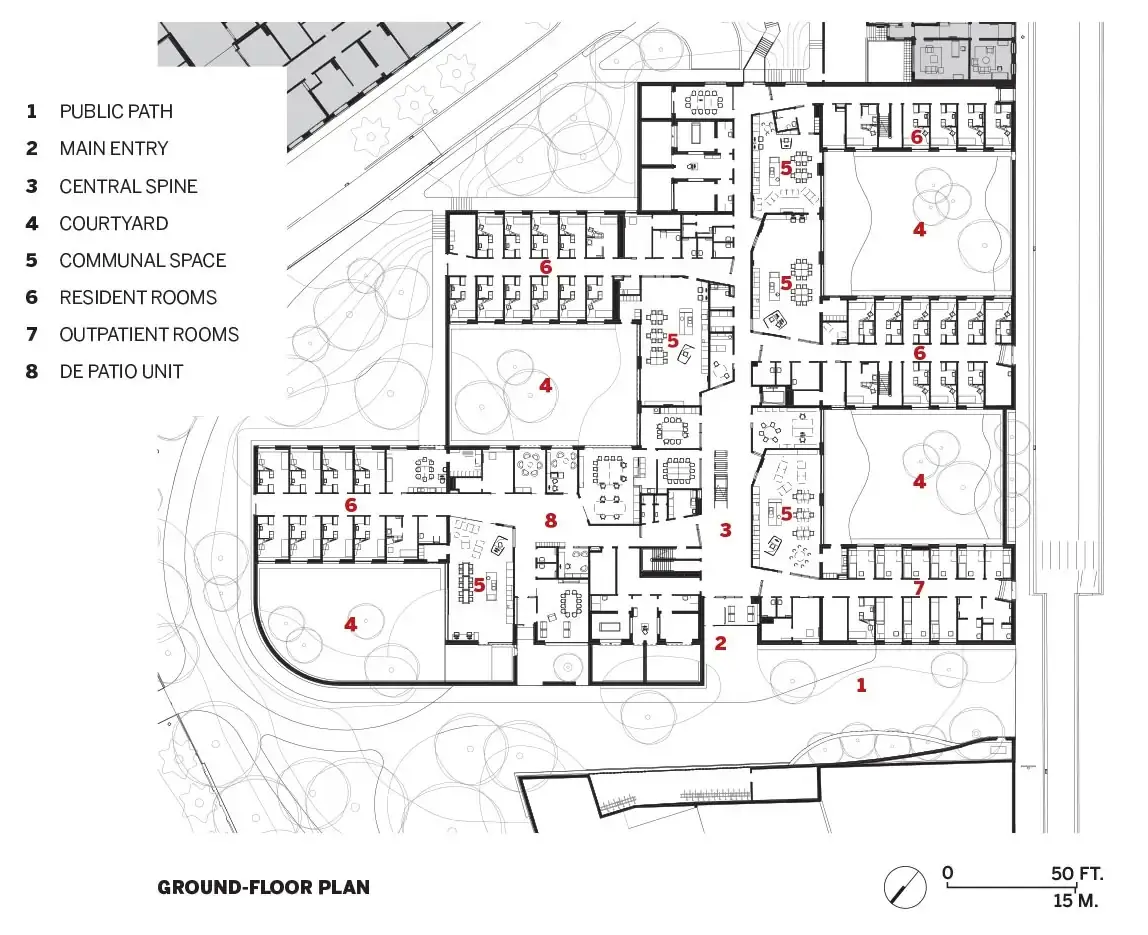
Credits
Architect:
VK architects+engineers — Frederique Lievens, project architect; Kim Debeyser, interior architect; Bert Scheirlynck, project manager
Engineer:
VK architects+engineers
Consultant:
VeCoBo (safety, energy)
General Contractor:
Artes Depret
Client:
Groep Zorg H. Familie
Size:
82,000 square feet
Cost:
$19.35 million
Completion Date:
May 2023
Sources
Masonry:
Wienerberger
Precast Concrete:
Artes Depret
Windows & Doors:
Reynaers Aluminum
Acoustical Ceilings:
Rockfon, Heradesign (wood wool panels)
Cabinetry & Custom Woodwork:
Vanver
Lighting:
BEGA (exterior); Modular Lighting Instruments (task and ambient); Luceplan (ambient)



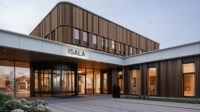
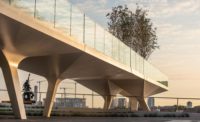
Post a comment to this article
Report Abusive Comment